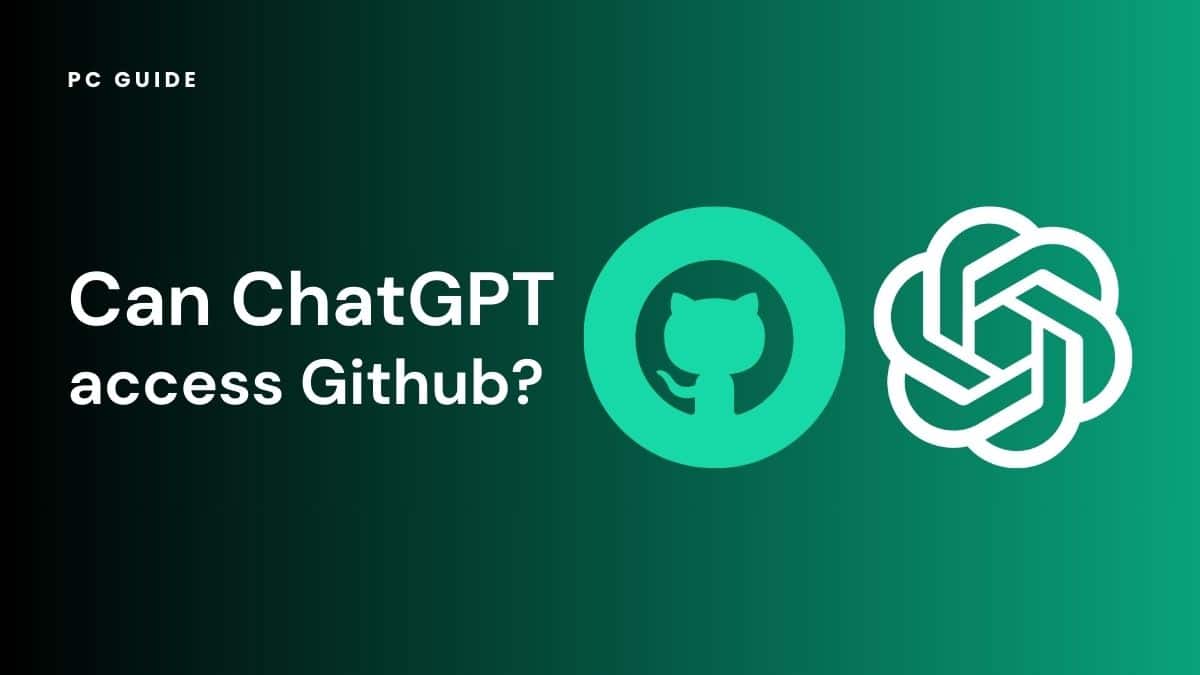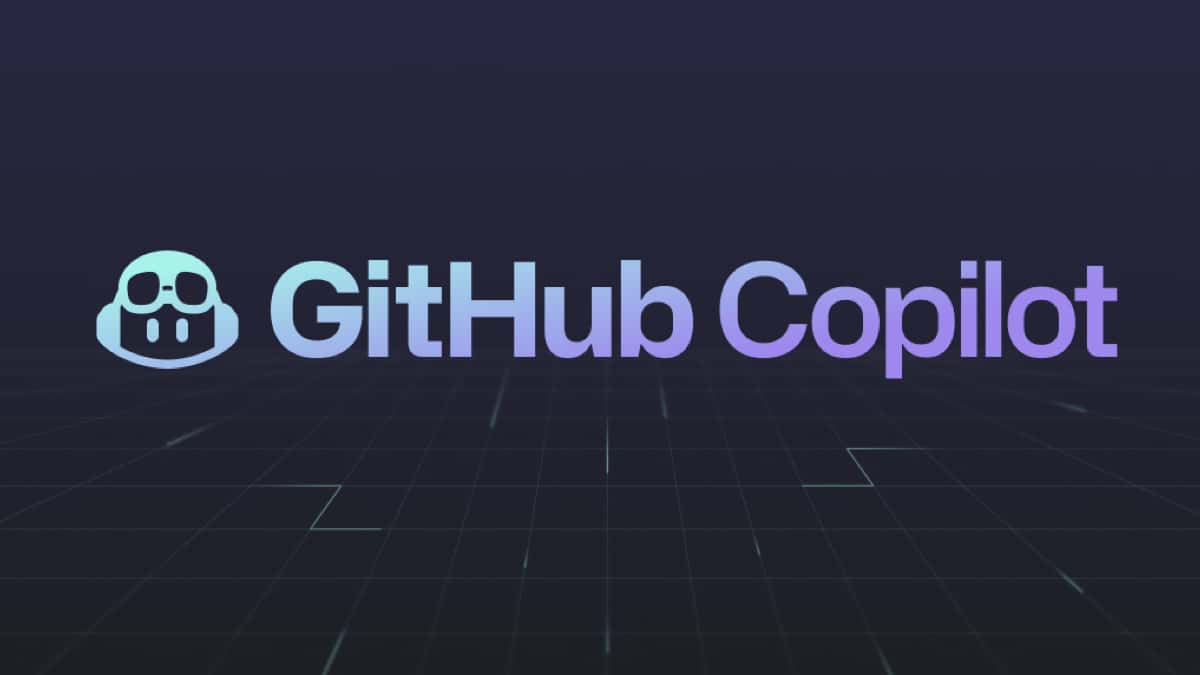Can ChatGPT access GitHub?

Table of Contents
ChatGPT has been a roaring success since its introduction on 30 November 2022. It was initially developed to use for customer services. However, it is helpful in many other ways. People use it to generate content, social media copies, and code. But where does ChatGPT bring the coding from? Is it coming from GitHub? The only way to get an answer is by determining if ChatGPT can access GitHub.
Understanding the terminal and prompt in the context of ChatGPT
The terminal and prompt are key components of the user interface when interacting with ChatGPT. The terminal is the command line interface where users input commands, while the prompt is the specific command or question inputted by the user to which ChatGPT responds.
Prime Day is finally here! Find all the biggest tech and PC deals below.
- Sapphire 11348-03-20G Pulse AMD Radeon™ RX 9070 XT Was $779 Now $739
- AMD Ryzen 7 7800X3D 8-Core, 16-Thread Desktop Processor Was $449 Now $341
- ASUS RTX™ 5060 OC Edition Graphics Card Was $379 Now $339
- LG 77-Inch Class OLED evo AI 4K C5 Series Smart TV Was $3,696 Now $2,796
- Intel® Core™ i7-14700K New Gaming Desktop Was $320.99 Now $274
- Lexar 2TB NM1090 w/HeatSink SSD PCIe Gen5x4 NVMe M.2 Was $281.97 Now $214.98
- Apple Watch Series 10 GPS + Cellular 42mm case Smartwatch Was $499.99 Now $379.99
- ASUS ROG Strix G16 (2025) 16" FHD, RTX 5060 gaming laptop Was $1,499.99 Now $1,274.99
- Apple iPad mini (A17 Pro): Apple Intelligence Was $499.99 Now $379.99
*Prices and savings subject to change. Click through to get the current prices.
This interaction is similar to how developers use the terminal to input commands in development environments, making ChatGPT a familiar tool for those with a background in coding.
How language models like ChatGPT work
ChatGPT, like other language models, uses machine learning algorithms to generate human-like text. It’s trained on a diverse range of internet text, but it doesn’t know specific documents or sources it was trained on.
It generates responses to prompts by predicting what comes next in a piece of text. This makes it a powerful tool for a variety of tasks, from drafting emails to writing code.
Understanding the ChatGPT Subscription Model
Access to ChatGPT is available through a subscription model. This subscription provides you with access to the ChatGPT API, which you can use to interact with ChatGPT from your applications. This can be particularly useful for integrating ChatGPT’s capabilities into your development workflows.
Identifying bugs with ChatGPT
ChatGPT can be a useful tool for identifying bugs in your code. While it doesn’t have direct access to your codebase, you can provide it with code snippets and ask it to identify potential issues. This can be particularly useful for catching common bugs or for getting a second opinion on a piece of code that’s causing issues.
Microsoft’s role in the development of Large Language Models
Microsoft has been a key player in the development of large language models. In fact, OpenAI and Microsoft have a partnership, and Microsoft has provided significant resources and expertise to help develop and refine models like ChatGPT.
This collaboration has led to advancements in natural language processing and the creation of tools like GitHub Copilot.
What is the role of Bing in ChatGPT’s development?
Bing, as a search engine developed by Microsoft, has been instrumental in the development of large language models like ChatGPT. The vast amount of data available through Bing has provided a rich resource for training these models.
How ChatGPT interacts with development environments
While ChatGPT itself doesn’t directly interact with development environments, it can be integrated into these environments to provide assistance, such as generating code or offering suggestions.
However, it’s important to note that ChatGPT doesn’t have access to any proprietary databases or specific systems like GitHub. Any interaction with GitHub would be through the developer’s own access and not ChatGPT’s.
The power of natural language processing in ChatGPT

ChatGPT leverages the power of natural language processing to understand and generate human-like text. This allows it to understand prompts in a variety of languages and contexts, making it a versatile tool for many tasks. Whether you’re drafting an email, writing a blog post, or generating code, ChatGPT can provide valuable assistance.
Gathering info and syntax with ChatGPT
ChatGPT can be a valuable tool for gathering info and understanding the syntax of various programming languages. By providing it with prompts related to the information or syntax you’re interested in, you can use ChatGPT to quickly and easily get the information you need.
Generating code snippets with ChatGPT
ChatGPT is capable of generating code snippets in various programming languages. You can provide it with a prompt describing the functionality you need, and it will generate a code snippet that accomplishes that task.
This can be a great way to quickly generate code for common tasks or to get a starting point for more complex functionality.
GitHub Copilot: An example of ChatGPT integration
GitHub Copilot is an AI-powered code completion tool developed by GitHub together with OpenAI. It uses a language model similar to ChatGPT to suggest lines or blocks of code as developers type. This is an example of how ChatGPT’s technology can be integrated into practical applications, providing real-time assistance to developers and enhancing productivity.
The evolution from GPT-3 to ChatGPT
GPT-3 and ChatGPT are both language models developed by OpenAI. While they share similar underlying technology, ChatGPT has been fine-tuned for generating conversational responses, making it particularly suited for tasks like drafting emails, writing code, creating written content, and more.
Using Python with ChatGPT for GitHub access
While ChatGPT doesn’t have direct access to GitHub, developers can use Python to interact with the GitHub API and then use ChatGPT to process or generate content based on that data. This can be a powerful combination, allowing developers to automate tasks and generate content more efficiently.
Prerequisites for using ChatGPT with GitHub
To use ChatGPT with GitHub, you’ll need a GitHub account, a ChatGPT subscription, and some knowledge of how to use APIs. With these prerequisites met, you can use the GitHub API to interact with your repositories and the ChatGPT API to generate content based on that data.
The ChatGPT API: A powerful tool for developers
The ChatGPT API is a powerful tool for developers, allowing you to integrate ChatGPT’s capabilities into your own applications. Whether you’re looking to automate tasks, generate content, or provide an interactive interface for your users, the ChatGPT API provides the functionality you need.
Exploring ChatGPT Plugins
ChatGPT plugins are tools that can enhance your experience with ChatGPT. These plugins can integrate ChatGPT into various platforms and tools, such as VS Code or JetBrains, allowing you to leverage the power of ChatGPT in your preferred development environment.
For instance, GitHub Copilot, a plugin powered by a language model similar to ChatGPT, can be used to generate code and suggestions directly in your editor.
ChatGPT and various programming languages
ChatGPT is capable of generating text in a variety of programming languages. Whether you’re working in Python, JavaScript, C++, or another language, ChatGPT can be a valuable tool for generating code snippets, suggesting fixes, and more.
Can ChatGPT have access to GitHub?
To find an answer, we told ChatGPT that we have a considerable code and cannot enter it entirely in the chatbot. ChatGPT replied that we could add the code to a code-sharing platform like Pastebin or GitHub Gist and share the link.
This clearly shows that ChatGPT can access GitHub. Why would it claim to access the code from a GitHub Gist link if it could not? While ChatGPT claims it can access GitHub, it still needs to make many mistakes, which means it may or may not be able to do it.
However, many users have said that while ChatGPT was reading a shared code correctly, they are experiencing some issues currently. Users say that ChatGPT suddenly gives an error stating that it cannot access external files. This means that while ChatGPT can access GitHub, it may not always be reliable.
Using ChatGPT in your browser
You can use ChatGPT directly in your browser, making it a versatile tool that you can use wherever you have internet access. This is possible through various platforms that offer an interface for ChatGPT, allowing you to interact with it without needing to install any additional software.
Linking your GitHub account with ChatGPT
While ChatGPT doesn’t have direct access to GitHub, you can still use it in conjunction with your GitHub account. By using the GitHub API, you can pull data from your GitHub repositories and use ChatGPT to process or generate content based on that data.
How to create a GitHub Gist file
To be able to share a GitHub Gist link to ChatGPT, you must first learn how to create one.
Given, below are the steps to make a GitHub Gist file:
- Sign in to GitHub.
- Go to Gist Home Page.
- Enter the file name in the “Filename including extension” field.
- Write the file's text in the file content field.
- Select whether you want to create a secret or public gist.
- Once the gist is created, copy the file's link and share it.
Looking forward: GPT-4 and GitHub
As we look to the future, we can expect to see continued advancements in language models like GPT-4. While these models will still not have direct access to platforms like GitHub, their increased sophistication will likely lead to more powerful integrations and capabilities, further enhancing their usefulness for developers.
Conclusion
Put simply, ChatGPT can access GitHub through GitHub Gist. This can be very beneficial for developers searching for help with their codes. However, you can only sometimes rely on ChatGPT to access your GitHub codes. Hence, it is best to find alternative ways. The good news is that GitHub is coming up with Copilot X based on Open AI's GPT 4 model to help with just that.
FAQs
What Are the Alternative Ways to Share Code if ChatGPT Does Not Access GitHub Gist?
If ChatGPT shows an error saying it cannot access external links, you can simply break your code into multiple messages, as it might not allow you to add all your code in a single message.
What Is the Difference Between GitHub and GitHub Gists?
Put simply, GitHub is the entire website, whereas GitHub Gists is just a service offered by GitHub.
What is the difference between GPT-3 and ChatGPT?
GPT-3 and ChatGPT are both language models developed by OpenAI. While they share similar underlying technology, ChatGPT has been fine-tuned for generating conversational responses, making it particularly suited for tasks like drafting emails, writing code, creating written content, and more.
Can ChatGPT work with various programming languages?
Yes, ChatGPT can generate text in a variety of programming languages. Whether you’re working in Python, JavaScript, C++, or another language, ChatGPT can be a valuable tool for generating code snippets, suggesting fixes, and more.
How does ChatGPT generate code snippets?
ChatGPT generates code snippets based on the prompts you provide. It uses its training on a diverse range of internet text to predict what comes next in a piece of text, allowing it to generate relevant and accurate code snippets.

